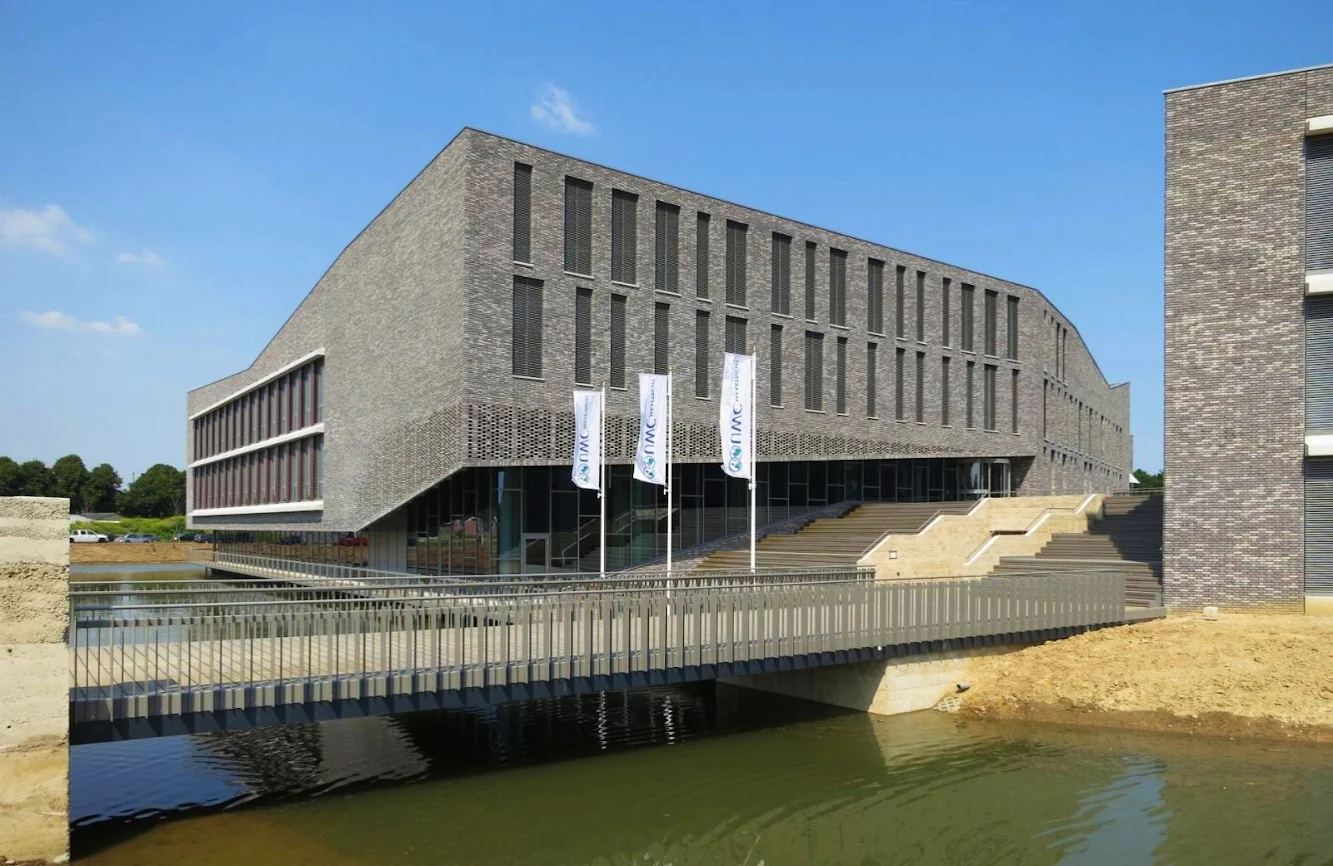
The new complex was constructed in a parklike environment, which is itself part of the country estate zone in Maastricht’s north-eastern area.

The site is surrounded by sport fields, an English-style nature reserve and new housing. The site as a whole and its main buildings face the access path, but in the complex itself you experience a carefully created sense of seclusion created by the pavilions and the focus on the existing lake.
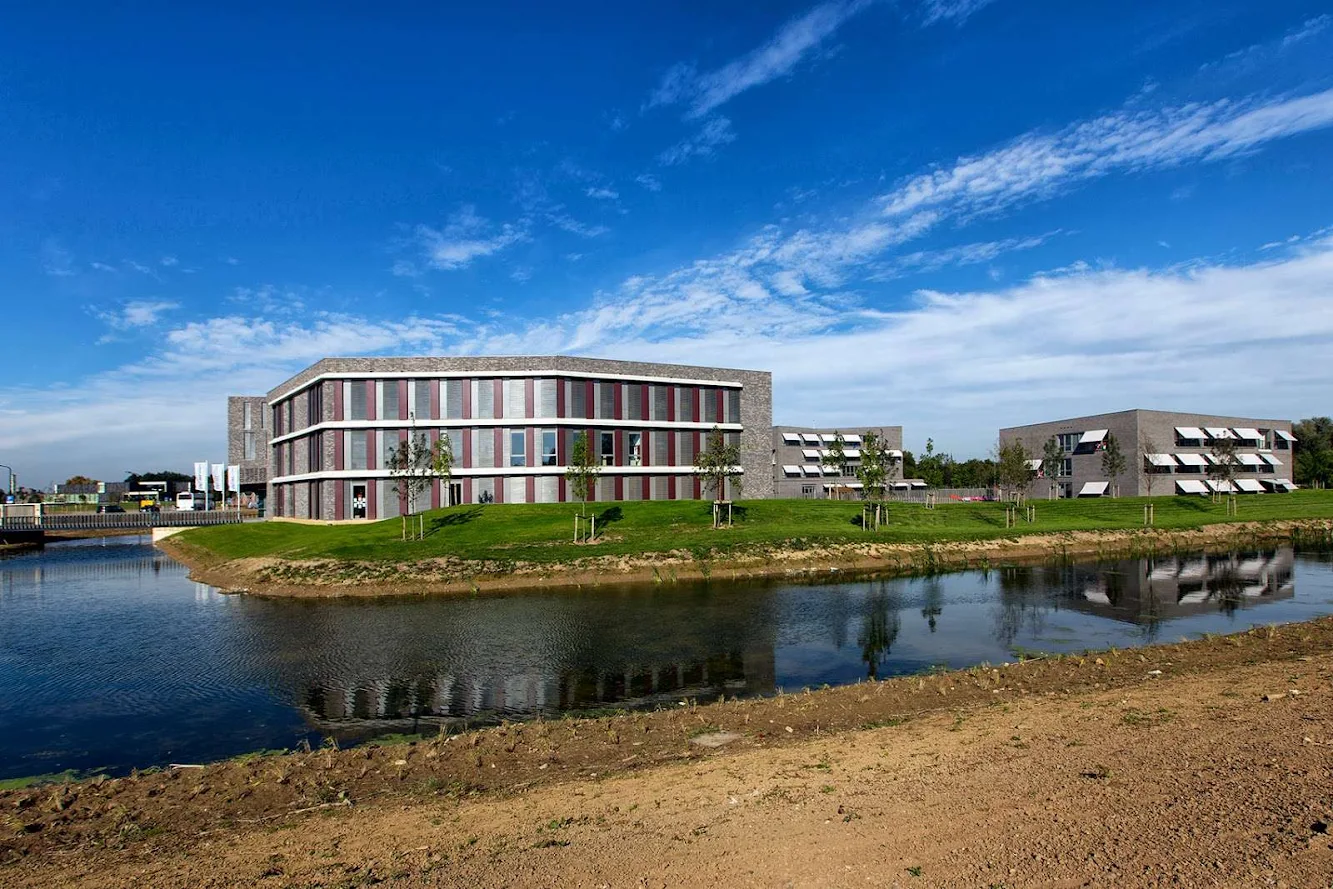
Arriving by the path, visitors first cross over a bridge that is only accessible to pedestrians and cyclists. to the left and right you will see the main buildings for the Pre-School, Primary and Secondary Schools. If you cross over the central plaza you will see the dorms and cafeteria.

You are unlikely to do well at school if you don’t feel at ease socially. It’s no coincidence then that the integrated design for UWC Maastricht attaches equal importance to social interaction and learning. This approach is clear in the entire layout as well in the individual buildings and floor plans. The educational building’s layout provides all kinds of options for both classroom education and other types of education.

In the south wing the very youngest children work in the Pre-school and Primary school section. There is a wide corridor area on each floor designed for multifunctional use. The secondary building also contains a little gymnasium and library especially set up for Pre-School and Primary children. The primary school has its own outdoor playground, so that the small children can play together in a semi-protected environment.
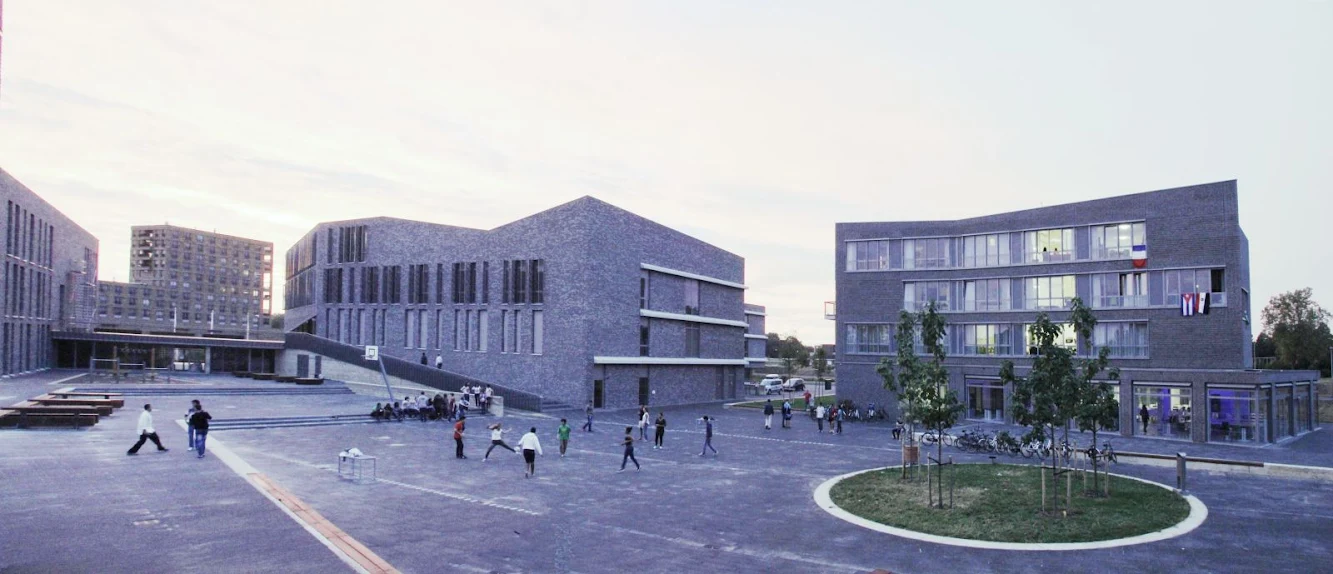
On the ground floor of the Secondary School, you will find a spacious library which is designed to provide areas for self-study and for working on projects and tasks. Next to the main entrance, there is a large meeting area that can be used for performances and meetings.

On the first floor the areas for creative subjects such as design and drama are clustered together. The music rooms are also located in this wing in a special soundproof zone. The laboratories and classrooms of the second and third floor are located around a central collective zone designed for multifunctional use.

Two hundred UWC Maastricht boarding students can be housed in the three on-site dorms. They live here in small groups, with four students sharing a bedroom. Each floor has six bedrooms plus an apartment for the houseparent. Each floor has a living room that includes a basic kitchen. Students will come together in the cafeteria for breakfast and dinner. The design sets high ambitions for sustainability.

From the very beginning a lot of thought was put into the environment, energy and value for the future. The construction materials were chosen on the basis of their solid quality and recyclability. The heating system is based on a geothermal heat pump system. The ventilation in the classrooms meets the requirements of‘’Frisse Scholen’’ a Dutch government programme intended to encourage schools to reduce energy use and improve indoor air quality.

The CO2 levels are measured for each room and the ventilation is adjusted appropriately. Ventilation, heating and lighting will only be turned on in the classrooms when people are actually present. Potable water is dealt with sparingly, and rainwater is stockpiled on the green roofs and transported to the lake. Calculations show that the building will score highly in terms of low energy use and sustainability.
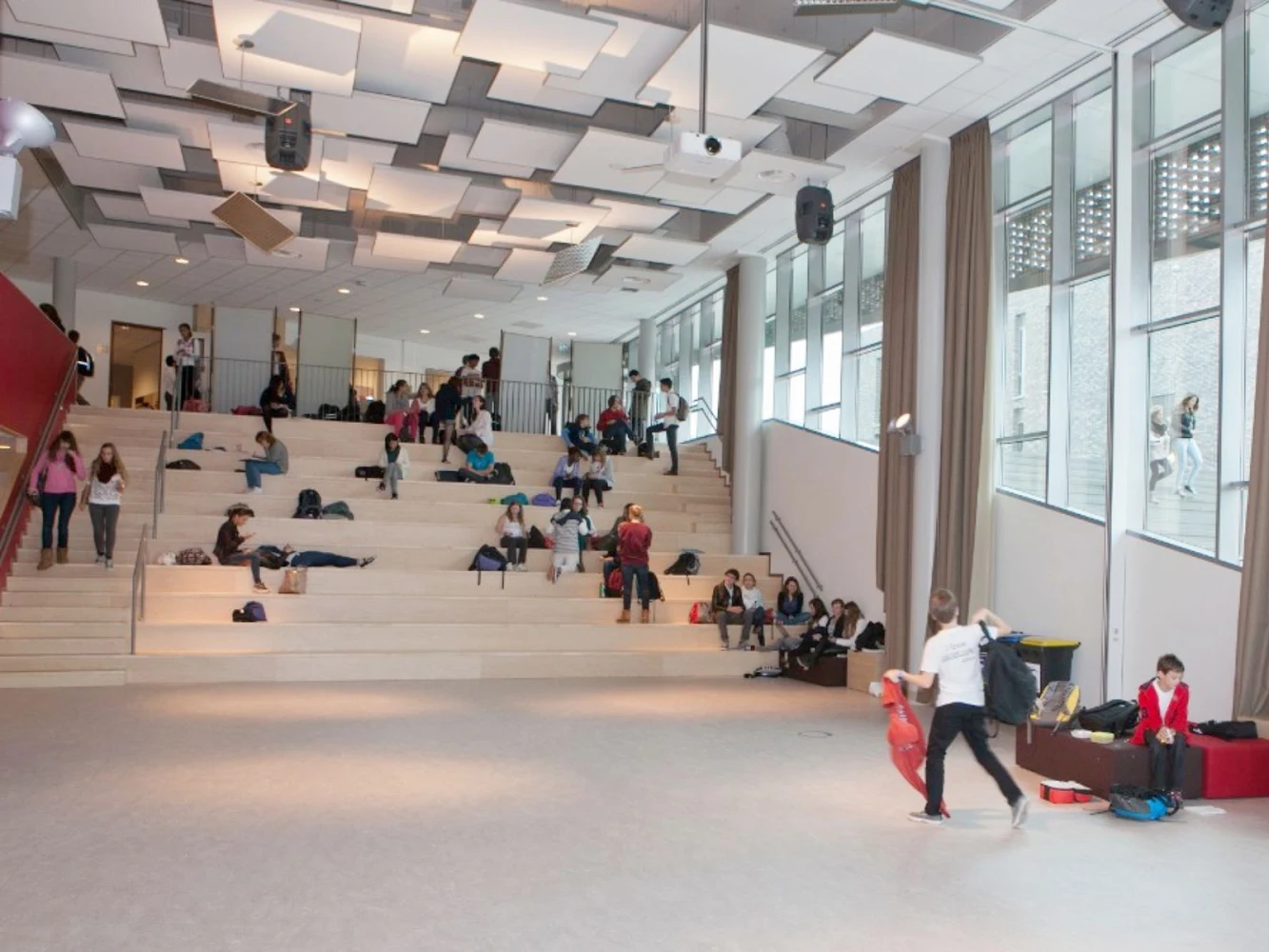


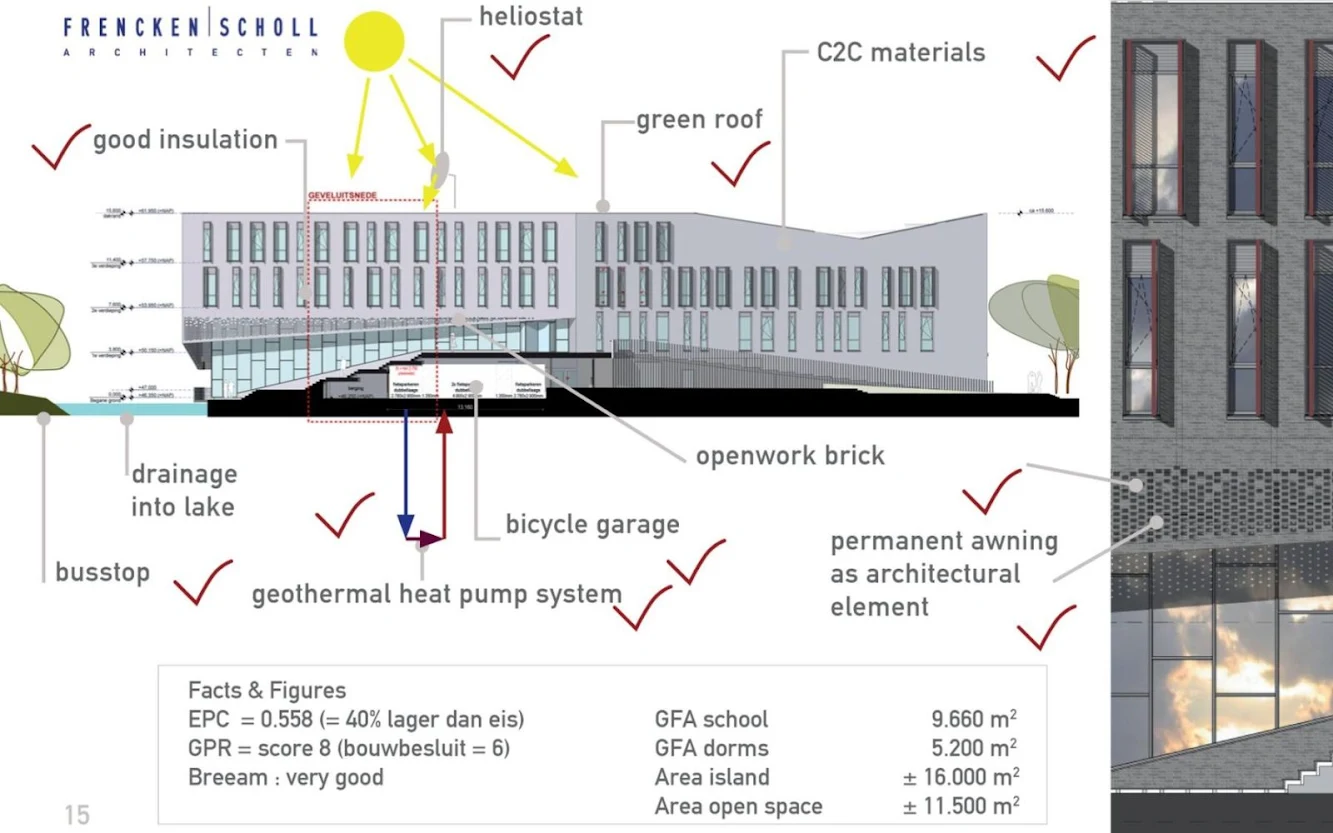


Location: Maastricht, Holland
Architect: Frencken Scholl Architecten
Area: 9500 m2
Year: 2013
Client: United World College Maastricht